Lessons in Sustainable Livestock Production
INSIDE ACADEMIA
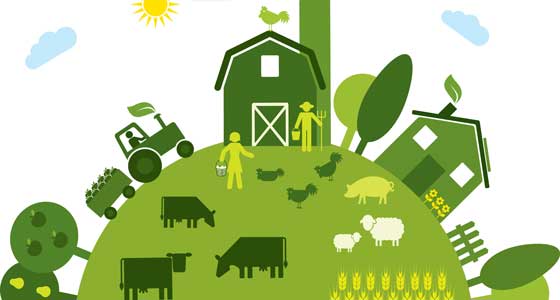
The global demand for meat and dairy products is increasing. And to meet consumers’ expanding palate for beef and cheese, cattle producers are seeking ways to maximize beef and dairy production while minimizing environmental impact and maintaining consumer expectations for quality and safety. Scientists at Utah State University (USU) are exploring ways to meet this challenge, identifying sustainable production methods that include optimal reproduction and breeding techniques, effective plans for nutrition and feed efficiency, and consistent meat quality.
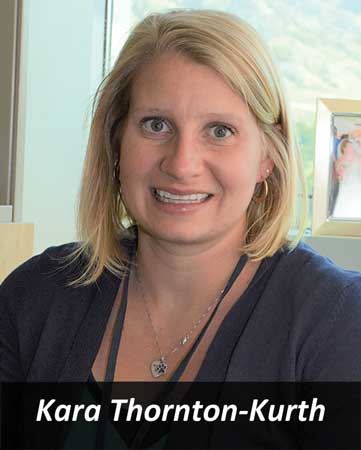 “The word sustainability gets misused often,” says Kara Thornton-Kurth, an assistant professor in the department of animal, dairy, and veterinary sciences at USU. “It’s a buzzword that people throw around; it can become a marketing ploy. In my opinion, we need to remember that sustainability is using what we have most efficiently, realizing that we don’t have that much to use.” In this context, sustainability involves utilizing the best methods to produce and raise livestock, harvest meat and dairy products, and preserve product. The notion of sustainable production in the beef and dairy sectors may seem like an oxymoron, but it is an objective that scientists have developed many strategies to achieve—because it involves far more than simply allocating more land for crops and less land for food animals.
“The word sustainability gets misused often,” says Kara Thornton-Kurth, an assistant professor in the department of animal, dairy, and veterinary sciences at USU. “It’s a buzzword that people throw around; it can become a marketing ploy. In my opinion, we need to remember that sustainability is using what we have most efficiently, realizing that we don’t have that much to use.” In this context, sustainability involves utilizing the best methods to produce and raise livestock, harvest meat and dairy products, and preserve product. The notion of sustainable production in the beef and dairy sectors may seem like an oxymoron, but it is an objective that scientists have developed many strategies to achieve—because it involves far more than simply allocating more land for crops and less land for food animals.
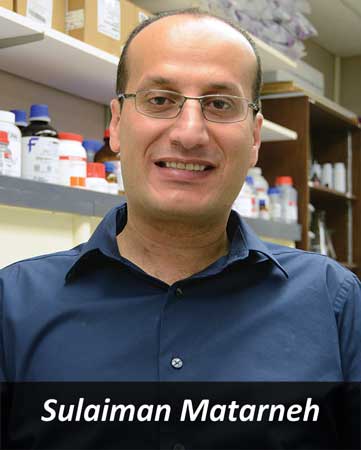 The Necessity of Animal Products
The Necessity of Animal Products
Beef and dairy products provide nutrients that are essential to humans: B6, B12, and other B vitamins; choline; iron; phosphorus; protein; selenium; and zinc. While plant foods may provide many of these nutrients, “meats are a better source of essential amino acids than vegetables,” asserts Sulaiman Matarneh, an assistant professor in the department of nutrition, dietetics, and food sciences at USU. “Some vegetables can still be a great source of protein, but most do not have all the amino acids our bodies need.” Moreover, beef, dairy, and other animal products are the only natural sources of vitamin B12 and heme iron. Plant foods generally do not contain vitamin B12 unless they are fortified (e.g., breakfast cereals), and plant foods contain non-heme iron, which is not absorbed by the human body as well as heme iron from beef and other animal products. “Beef is … a source of many necessary nutrients in a desirable form,” says Charles Carpenter, a professor and head of the department of nutrition, dietetics, and food sciences at USU. “Not only is beef a good source of heme iron, which is more readily absorbed by humans than other forms; it also enhances absorption of iron from other things in the diet.” The combination of certain populations’ having little or no access to meat products and the rising popularity of vegetarian and vegan diets among other populations makes iron deficiency the most common nutrient disorder in the world, affecting people in developing countries as well as those in affluent nations. “If you think about a plant-protein source compared to an animal-protein source,” Thornton-Kurth adds, “animals more closely match a human, which means their amino acid profile is going to more closely match what humans need. So we’re able to get higher quality, more digestible protein from meat sources than we can from plant sources.”
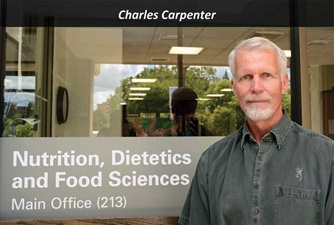
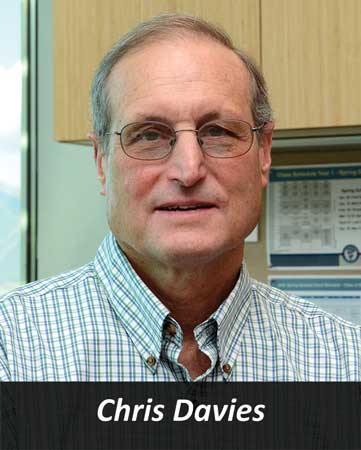 Beef and dairy cattle also provide a service that armchair environmentalists rarely consider: Less than 15% of the world’s land is suitable for cultivating crops that humans can eat. Cattle and other ruminants (goats and sheep) “can utilize land that would be marginal for crop production and convert roughage into high-quality protein,” says Chris Davies, a professor in USU’s department of animal, dairy, and veterinary sciences and director of the school’s Center for Integrated Biosystems. Thornton-Kurth agrees: “Cattle are absolutely amazing because they can eat things that no other animal can eat. Especially here in the state of Utah and in the intermountain west, where we have rangeland that doesn’t get a lot of rain. Because we don’t have a lot of water, we can’t develop that land; we can’t use that land for other things.” During the course of their lives, at least 85% of what cattle eat cannot be consumed by humans. Essentially, cattle constitute a sustainable way to use nonarable land to produce food because they convert forages such as alfalfa, sagebrush, red clover, and other low-quality plants into high-quality foods that humans can consume. “The largest agricultural crop in the state [of Utah] is alfalfa. We don’t have a lot of trouble irrigating alfalfa, but corn doesn’t do well here because we have too short a growing season,” Carpenter confirms. “But you can grow alfalfa of great quality because most of the days are dry. … We use beef as an intermediate to translate that resource into something that we can consume.
Beef and dairy cattle also provide a service that armchair environmentalists rarely consider: Less than 15% of the world’s land is suitable for cultivating crops that humans can eat. Cattle and other ruminants (goats and sheep) “can utilize land that would be marginal for crop production and convert roughage into high-quality protein,” says Chris Davies, a professor in USU’s department of animal, dairy, and veterinary sciences and director of the school’s Center for Integrated Biosystems. Thornton-Kurth agrees: “Cattle are absolutely amazing because they can eat things that no other animal can eat. Especially here in the state of Utah and in the intermountain west, where we have rangeland that doesn’t get a lot of rain. Because we don’t have a lot of water, we can’t develop that land; we can’t use that land for other things.” During the course of their lives, at least 85% of what cattle eat cannot be consumed by humans. Essentially, cattle constitute a sustainable way to use nonarable land to produce food because they convert forages such as alfalfa, sagebrush, red clover, and other low-quality plants into high-quality foods that humans can consume. “The largest agricultural crop in the state [of Utah] is alfalfa. We don’t have a lot of trouble irrigating alfalfa, but corn doesn’t do well here because we have too short a growing season,” Carpenter confirms. “But you can grow alfalfa of great quality because most of the days are dry. … We use beef as an intermediate to translate that resource into something that we can consume.
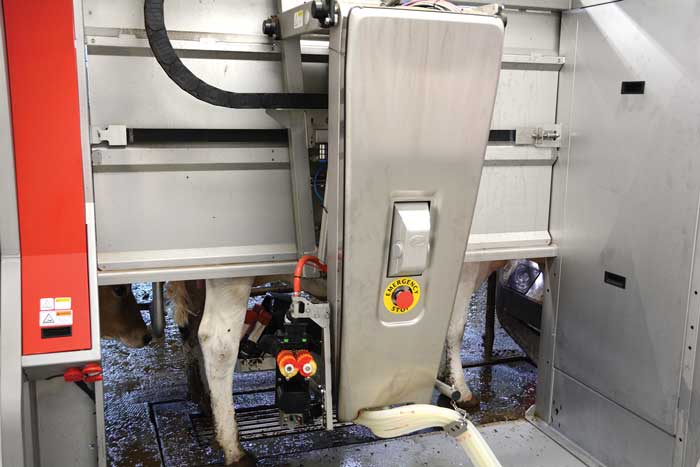 “I think that’s why historically our food science efforts here have had the biggest focus on dairy and meats, and that’s what we maintain. It just makes sense for us—having a land-grant mission for the state of Utah—to focus on that,” Carpenter continues. Part of ensuring that cattle production is sustainable involves ensuring that the cattle with the most muscle (for meat) or those that produce the most milk grow well and reproduce successfully. To ensure that cattle grow well, USU researchers have investigated ways to improve feed efficiency. Feed efficiency refers to the pound of milk, meat, or other animal product produced per pound of feed consumed by a cow or steer. “One of my favorite things that I’ve read is a statistic I saw that said that in 1959, we had the same number of cattle that we have now in the United States,” Thornton-Kurth says. “If you think about how the population has changed in the United States since 1959, we have a lot more people. Yet we’re able to feed more people with essentially the same number of cattle that we had almost 60 years ago.” This is possible because the research teams at USU and other universities have made significant improvements in nutrition and feed efficiency. “We can decrease the amount of feed that [cattle] need in order to produce a certain amount of meat or a certain amount of product, depending on whether you’re talking about meat, milk, wool, any sort of end product that you can get from animals,” Thornton-Kurth reveals. “So we’re able to feed them less and get more. We’re also able to get improved growth or improved production out of those animals.”
“I think that’s why historically our food science efforts here have had the biggest focus on dairy and meats, and that’s what we maintain. It just makes sense for us—having a land-grant mission for the state of Utah—to focus on that,” Carpenter continues. Part of ensuring that cattle production is sustainable involves ensuring that the cattle with the most muscle (for meat) or those that produce the most milk grow well and reproduce successfully. To ensure that cattle grow well, USU researchers have investigated ways to improve feed efficiency. Feed efficiency refers to the pound of milk, meat, or other animal product produced per pound of feed consumed by a cow or steer. “One of my favorite things that I’ve read is a statistic I saw that said that in 1959, we had the same number of cattle that we have now in the United States,” Thornton-Kurth says. “If you think about how the population has changed in the United States since 1959, we have a lot more people. Yet we’re able to feed more people with essentially the same number of cattle that we had almost 60 years ago.” This is possible because the research teams at USU and other universities have made significant improvements in nutrition and feed efficiency. “We can decrease the amount of feed that [cattle] need in order to produce a certain amount of meat or a certain amount of product, depending on whether you’re talking about meat, milk, wool, any sort of end product that you can get from animals,” Thornton-Kurth reveals. “So we’re able to feed them less and get more. We’re also able to get improved growth or improved production out of those animals.”
The Grass Is Not Always Greener
It is often assumed that raising beef and dairy cattle on grass for their entire lives or in an organic production environment increases the sustainability of cattle production and is better for the environment. This assumption is inaccurate, and Thornton-Kurth explains why: “There’s … a little bit of a difference in terms of sustainability between grass-finished and grain-finished animals,” she says. “One of the reasons that we grain-finish animals and why we call a grain-finished animal a conventionally finished animal is that by increasing the energy density in their diet, we are able to get a large amount of gain from those animals. It’s not uncommon to get four pounds of gain per day in those animals when they’re in a feedlot. Whereas when you have a grass-finished animal, there is no grass in the world that is going to be as energy-dense as some of our grains (corn and barley). It takes longer to finish those animals out.” And the longer it takes for animals to be raised, finished, and harvested, the more land, feed, and water they require, which translates to a less sustainable production cycle. “Because grain-finished animals aren’t finished for as long, … they typically go to harvest earlier, which means they don’t have as much time to produce methane or other greenhouse gases,” Thornton-Kurth asserts. “When you feed animals a ration that has a lot more forage in it, then the way that breaks down in their rumen (the first chamber of their stomach) is that it creates a microbial profile that essentially creates more methane than in a grain-finished animal. So grass-finished animals are going to produce more total methane through fermentation of that grass.”
Similarly, cattle raised in organic production systems can also take longer to reach market weight. One reason for this is that organically raised cattle cannot receive antibiotics or other medicines, so they expend more energy (the feed they eat) trying to fight infections instead of gaining muscle mass. “Consumers assume organic animals are healthier, and they’re not,” Thonrton-Kurth reveals. “They don’t grow as well because, just like you and I, if we get sick from something, we take antibiotics to treat it. But with [organic] animals, we can’t. If [organic animals] get sick enough, [organic producers] will treat them with antibiotics and sell them to a conventional producer. But … these animals—relative to conventionally raised animals—have a larger subclinical bacterial infection, and they also tend to have a larger load of parasites because there aren’t approved de-wormers. These animals aren’t quite as happy and healthy as organic commercials or organic packaging lead people to believe.”
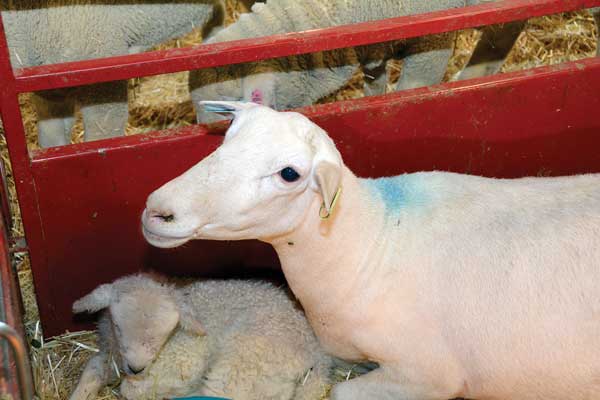 Assisted Reproductive Technologies for Livestock
Assisted Reproductive Technologies for Livestock
Maximizing sustainable cattle production involves utilizing effective breeding techniques and reproductive technologies. Many (if not most) domestic cattle are the result of selective breeding to produce animals with particular traits, such as adaptability to certain climates, greater muscle mass, and increased milk production. Modern selective breeding in cattle involves a number of assisted reproductive technologies, including artificial insemination, in vitro fertilization, and embryo transfer. The scientists at USU have made several advances in one of the most advanced forms of assisted reproductive technology: cloning.
Cloning—as well as other forms of assisted reproductive technology—allows cattle producers to improve the quality of herds much faster than through natural mating. Every cell in humans and other animals has a nucleus, containing chromosomes (i.e., genes). Somatic cells contain two copies of each chromosome in the nucleus while reproductive cells (egg and sperm) contain one copy of each chromosome. During natural reproduction, an egg and sperm fuse, resulting in an embryo with two sets of chromosomes. “To clone animals, we remove the nucleus from an oocyte (an egg) and then take a somatic cell (an adult cell) that’s been put into a quiescent state of development and fuse it with the egg so that we’re introducing the nucleus from the adult cell into the egg,” Davies explains. “That will essentially replace the nuclear material (the DNA) that would normally come from the mother and the father and produces a genetic copy of the original animal (the donor adult animal).” The clone embryo is then implanted in a cow so that it can develop through a normal gestation cycle. Cloned animals are genetically identical to the donor animals, but environmental or epigenetic factors may cause some variation. Essentially, clones are similar to identical twins but born at different times.
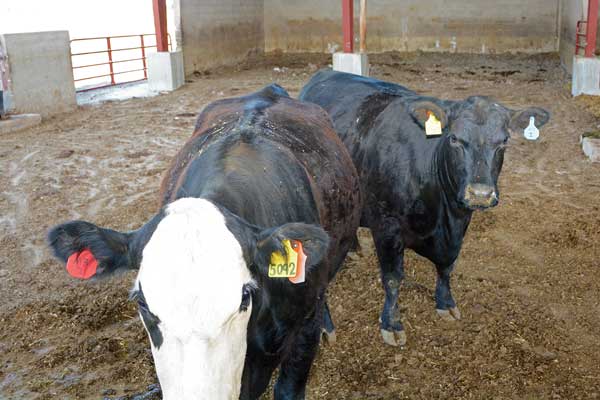 USU’s researchers have successfully cloned beef and dairy cattle, goats, sheep, and equine animals. But a significant portion of their cloning efforts are focused on achieving greater dairy yields and producing higher-quality meat for greater product consistency. “Ken White, our dean, has had a project that’s been going on for eight or 10 years with J.R. Simplot Company, which is one of the largest beef producers in the [United States],” Davies says. “They are improving meat quality by selecting at the slaughterhouse stage carcasses that are of a prime grade. At that stage, obviously, you are beyond reproducing that animal using normal reproductive methods. But they can take cells from the animal at slaughter and use cloning to reproduce those very high-value steers. … The clone is a bull, so you’ve reinstituted the ability to use that animal for reproduction. And the offspring of those [cloned] animals tend to have carcasses that grade higher than you would obtain just trying to select bulls based on visual characteristics when they’re young.” The U.S. Food and Drug Administration (FDA) approved the use of cloned cattle, goats, and swine and their offspring for human food in 2008. However, because it is still expensive to clone animals, most cloned cattle are not harvested for food. “Most of the cloned animals do not go to slaughter; they are used for reproduction. They’re not going to be a major direct contributor to the food chain, but their offspring would be,” Davies says.
USU’s researchers have successfully cloned beef and dairy cattle, goats, sheep, and equine animals. But a significant portion of their cloning efforts are focused on achieving greater dairy yields and producing higher-quality meat for greater product consistency. “Ken White, our dean, has had a project that’s been going on for eight or 10 years with J.R. Simplot Company, which is one of the largest beef producers in the [United States],” Davies says. “They are improving meat quality by selecting at the slaughterhouse stage carcasses that are of a prime grade. At that stage, obviously, you are beyond reproducing that animal using normal reproductive methods. But they can take cells from the animal at slaughter and use cloning to reproduce those very high-value steers. … The clone is a bull, so you’ve reinstituted the ability to use that animal for reproduction. And the offspring of those [cloned] animals tend to have carcasses that grade higher than you would obtain just trying to select bulls based on visual characteristics when they’re young.” The U.S. Food and Drug Administration (FDA) approved the use of cloned cattle, goats, and swine and their offspring for human food in 2008. However, because it is still expensive to clone animals, most cloned cattle are not harvested for food. “Most of the cloned animals do not go to slaughter; they are used for reproduction. They’re not going to be a major direct contributor to the food chain, but their offspring would be,” Davies says.
USU is also exploring other genetic breeding techniques that could eventually strengthen the sustainability of the production of cattle and other farm animals. “Obviously, the population is growing rapidly, and we need to increase food production across the wide range of different foods—both plant-based and animal-based,” Davies says. “With modern genetic breeding techniques, … if we know of a particular genetic variance that provides a growth or production advantage, we have the ability to actually selectively go in and edit the genome to improve production, improve disease resistance, [and] improve animal welfare. And I think that’s the direction that animal breeders are moving in.” Davies provides a prime example of using such gene-editing techniques on breeds of cattle that grow horns. “Most of our dairy cattle grow horns, but we have to de-horn them, generally, at a very young age for safety reasons—both for the animals and for the people who work with them,” Davies says. “It’s fairly straightforward to go in and change the polled gene in dairy cattle to make it so that they don’t grow horns anymore, which would mean that you don’t have to de-horn them—which is painful for the animals and unpleasant for the farmers.” The FDA has not approved this type of gene editing for land-based food animals (the FDA has already approved a type of transgenic salmon for human consumption), but Davies believes it won’t be long before the agency approves advanced gene-editing techniques for cattle, goats, and sheep.
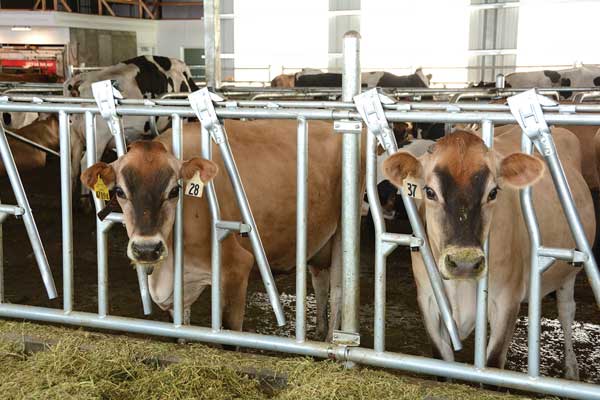 Sustaining Meat Quality
Sustaining Meat Quality
Besides improving the sustainability of cattle production, selective breeding techniques also improve the quality of meat, which is important. “Flavor, juiciness, tenderness: All these we call the meat quality attributes,” Matarneh says. And while it may not typically be considered a way to increase sustainability, meat processing is a way to make the best use of meat and other animal products and improve quality. “The overall goal for meat scientists is to improve quality and consistency of meat. We want to make sure that when consumers buy meat, they get the same quality over and over. That’s our major goal. If that happens, it will likely increase the demand for meat, which means the processors will work more and producers have to produce more. How do we sustain that?” Matarneh considers. “We can accomplish that through nutrition, genetic selection of the right animals, and … management.” However, sometimes simply selecting a genetic line that produces more meat per animal is not the best option. “The high efficiency animal may not always produce good quality meat,” Matarneh observes. “For example, there is a beef cattle breed called Belgian blue, and some of these animals have a mutation called double muscling. These animals have huge muscles and barely any fat, but when you cook their meat, it tastes like wood.” Matarneh and other USU meat scientists can thus help producers identify which genetic lines will yield products that are most palatable to consumers. “It is not about just performance. The meat industry is driven by consumers. If consumers like a product, you want to maintain that. But if consumers don’t like it, then you have to change the breed,” Matarneh concludes. “If you make the consumer happy, then that will be beneficial for the consumer, the manufacturers, the producers, and the breeders.”
Cattle and other food animals serve a vital role in the food system, providing high-quality protein and essential nutrients, but it takes a lot of resources to produce beef and dairy cattle. To get the most out of the resources required to produce and raise cattle, it is important to make wise choices that benefit not only the environment but also cattle and consumers. “Sustainable production must include wise use of what you’re producing. You want to produce things wisely, but you also want to use them and consume them wisely,” Carpenter concludes. “Right now it’s clear, especially for the state of Utah, that to produce a food supply for humans, it only makes sense to do what’s sustainable for us.” Indubitably, the cutting-edge interdepartmental research at USU will provide the beef and dairy industries with wise options to produce beef and dairy products in a sustainable manner for decades to come.
Toni Tarver is senior technical editor of Food Technology magazine ([email protected]).
